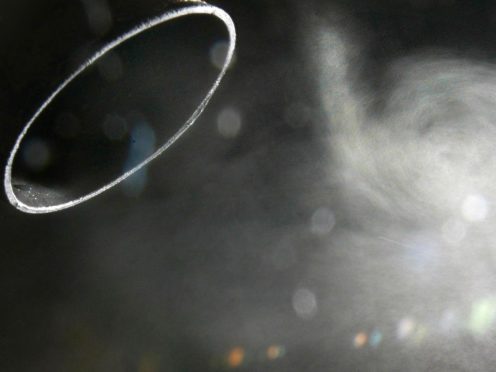Older people exposed to air pollution are more at risk of dementia, particularly if they suffer from cardiovascular disease, a study suggests.
Research focused on around 2,900 older people living in a district of central Stockholm, whose progress was followed for up to 11 years, with 364 of those in the observational study developing dementia.
Levels of key air pollution – nitrogen oxides and tiny particles known as PM2.5 – were estimated at the residential addresses of those in the study.
The research, published in the journal Jama Neurology, found higher levels of exposure to air pollution were linked to an increase in incidence of dementia, with the last five years of exposure appearing the most important.
Cardiovascular diseases (CVD) – conditions affecting the heart or blood vessels – appeared to amplify the negative effects of air pollution, the researchers said.
Heart failure and ischemic heart disease both increased the dementia risk and stroke explained almost 50% of air pollution-related dementia cases, they said.
While ultra-fine pollution particles may reach the brain via blood vessels and cause direct damage, the study said air pollution could also affect the brain indirectly.
That is because air pollution puts cardiovascular health at risk and is known to be an important trigger for heart attacks, heart failure and stroke.
In turn, cardiovascular disease accelerates cognitive decline.
The researchers also warned the findings were made in an area where pollution levels are below EU safe limits and considered to be low by international standards.
Author Giulia Grande, researcher at the Department of Neurobiology, Care Sciences and Society at Karolinska Institutet, Stockholm, said: “Interestingly, we were able to establish harmful effects on human health at levels below current air pollution standards.
“Our findings suggest air pollution does play a role in the development of dementia, and mainly through the intermediate step of cardiovascular disease and especially stroke.
And she said: “Air pollution is an established risk factor for cardiovascular health and because CVD accelerates cognitive decline, we believe exposure to air pollution might negatively affect cognition indirectly.
“In our study, virtually all of the association of air pollution with dementia seemed to be through the presence or the development of CVD.”
The finding added more reasons to reduce emissions from sources such as transport, and to optimise treatment of cardiovascular disease – particularly for people living in the most polluted areas of cities, she suggested.
Dr Alison Evans, head of policy at Alzheimer’s Research UK, said a growing body of evidence showed air pollution was linked to the risk of developing dementia.
“While dementia isn’t an inevitable part of getting older, factors including age, genetics and the environment affect the risk of developing the condition.
“The brain is closely linked to the health of our heart and blood supply.
“In this well-conducted study, many of the dementia cases were linked to heart disease and poor brain blood supply,” she said.
“Good brain health should be a focus throughout life in order to reduce the risk of dementia and working towards cleaner air in our cities should remain a critical public health goal.”









